#Fushimi-Inari Taisha
Text
日本のトリビアまとめ #0012

#Fushimi-Inari Taisha#Japanese Trivia#金閣寺#伏見稲荷大社#Kinkakuji Temple#京都の名所#Kiyomizu temple#famous places in kyoto#Ginkakuji Temple#清水寺#銀閣寺#日本のトリビア
0 notes
Photo

伏見稲荷大社
京都の名所
伏見稲荷大社(ふしみいなりたいしゃ)は、京都市伏見区に位置する、日本でも有名な神社の一つです。この神社は、稲荷大明神を祀った社であり、特に「千本鳥居(せんぼんとりい)」で知られています。
伏見稲荷大社は、稲荷神を祀る神社として非常に古い歴史を持っています。神社の創建は古く、稲荷神は豊穣や商売繁盛、そして災害からの保護の神として信仰されています。
この神社の特徴は、千本鳥居の参道です。参道には大小さまざまな朱塗りの鳥居が連なっており、それが続く風景は非常に印象的です。鳥居は寄進されたもの��、多くの企業や個人が自身や事業の繁栄を祈願して寄進しています。
また、山岡家ゆかりの赤い玉ねぎをモチーフにした「赤玉子」や、「絵馬」なども有名です。観光客は参拝や写真撮影の他にも、お土産を購入したり、願い事を込めて絵馬に願い事を書くことができます。
伏見稲荷大社は、観光客だけでなく、地元の人々からも信仰を集める重要な神社であり、年間を通じて多くの人々が訪れています。特に新年や秋の紅葉の時期には非常に混雑し、多くの人々が訪れます。
♪♫♬🎤🎹🎶♪♫♬🎤🎹🎶♪♫♬🎤🎹🎶♪♫♬🎤🎹🎶
Fushimi-Inari Taisha
famous places in kyoto
Fushimi Inari Taisha is one of the most famous shrines in Japan, located in Fushimi Ward, Kyoto City. This shrine is dedicated to Inari Daimyojin, and is especially known for its ``Senbon Torii''.
Fushimi Inari Taisha has a very long history as a shrine dedicated to the god Inari. The shrine was founded a long time ago, and Inari is believed to be the god of fertility, prosperous business, and protection from disasters.
The main feature of this shrine is the 1,000 torii gates leading to the shrine. The approach to the shrine is lined with vermilion-painted torii gates of various sizes, and the scenery is very impressive. Torii gates were donated, and many companies and individuals donate them to pray for the prosperity of themselves and their businesses.
Also famous are the ``red egg'' with a red onion motif, which is associated with the Yamaoka family, and the ``ema'' (votive tablet). In addition to visiting the shrine and taking photos, tourists can purchase souvenirs and write their wishes on votive tablets.
Fushimi Inari Taisha is an important shrine that attracts worship from not only tourists but also local people, and is visited by many people throughout the year. It is very crowded, especially during the New Year and the autumn leaves season, when many people visit.
0 notes
Photo
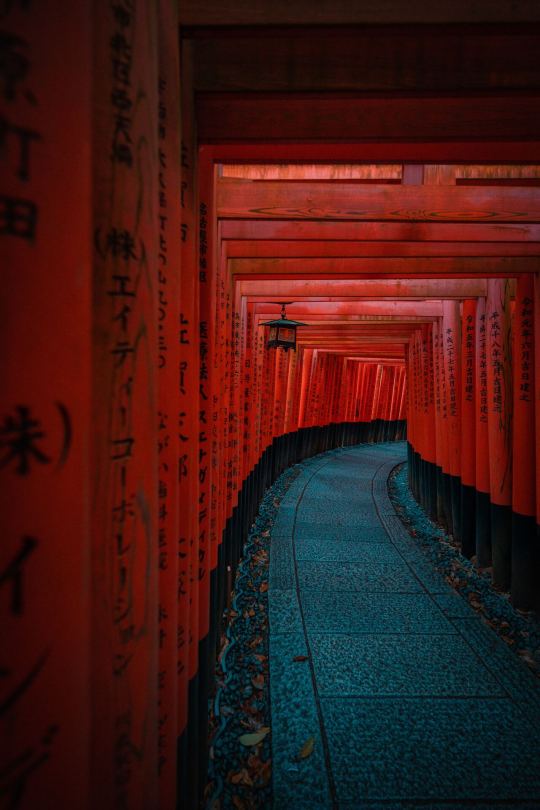
(by Andrea De Santis)
#vertical#landscape#x#a#watsf#curators on tumblr#Andrea De Santis#japan#kyoto#shrine#Shinto shrine#Fushimi Inari Taisha#pathway#path
1K notes
·
View notes
Text




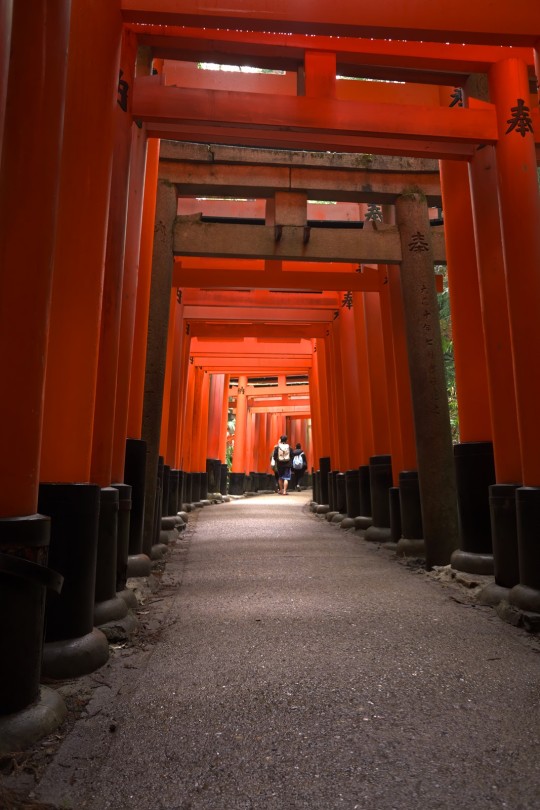
伏見稲荷ともなると雨でも早朝でも無人の境内を静かに参拝・・・なんてできるわけもなく。お稲荷様は今日も大人気。
伏見稲荷大社
January 2024
265 notes
·
View notes
Text




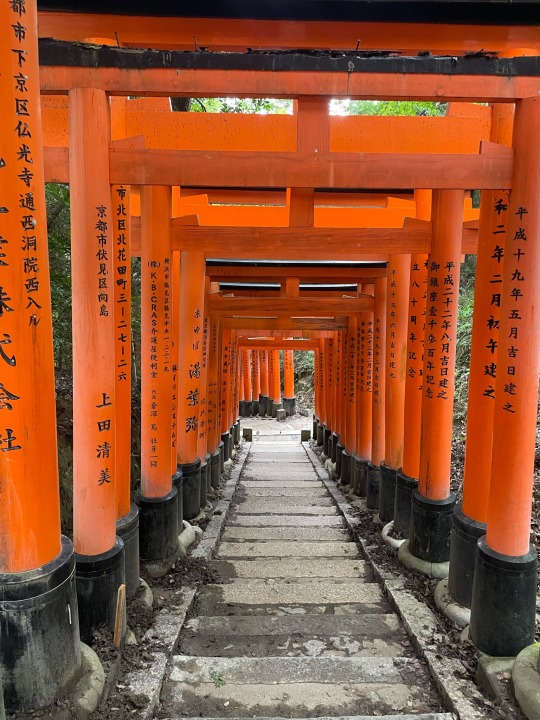


This is my first post.
I’m a Japanese and i just want to introduce about Japan.
There is Fushimi inari - shrine in Kyoto Japan.
I think it’s very famous of shrine in Kansai-area for tourists.
Long time ago, I hadn’t seen English signs but now there are many English signs.
I believe that you have enjoyed time in there.
Place: Fushimi inari - shrine in Kyoto Japan
Access: near by Fushimi inari station
#japan#japan travel#japan trip#japan tour#japanese#japan photos#japan vacation#japan kyoto#kyoto travel#kyoto trip#kyoto vacation#kyoto japan#kyoto prefecture#fushimi inari shrine#fushimi inari taisha
63 notes
·
View notes
Text
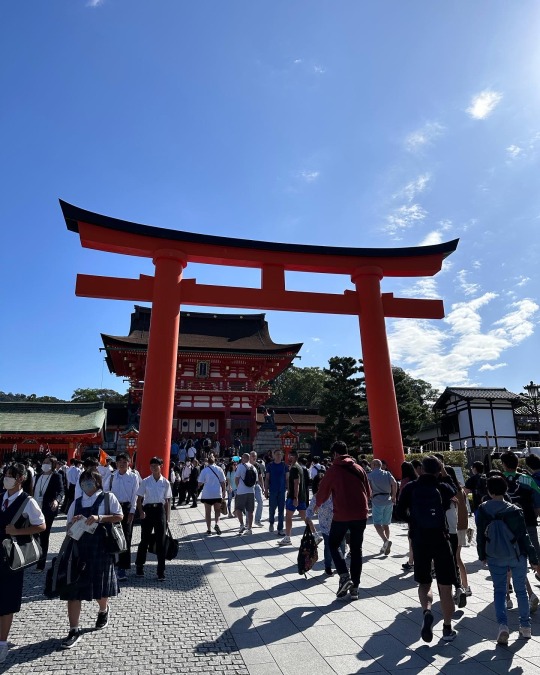


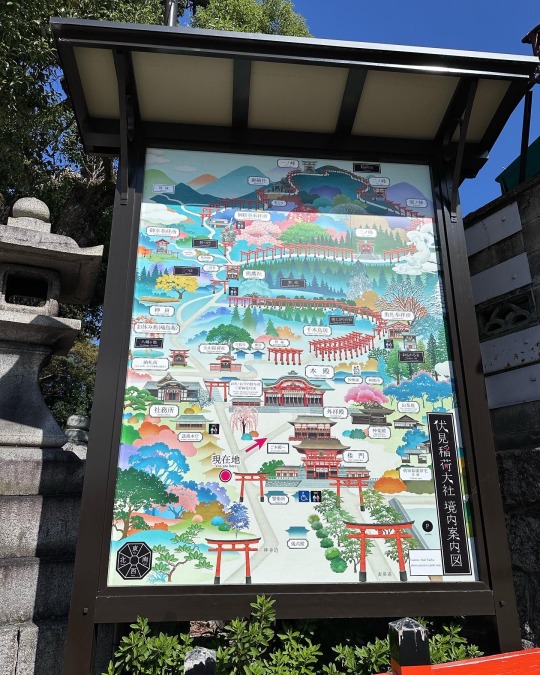

My Japan Trip : Fushimi Inari Taisha
36 notes
·
View notes
Photo





[Kitsune mon] (fox crests) a lovely yuuzen dyework by Yukiya, sprinkling symbols linked to Inari foxes imagery all across this kimono (lining included!). Much like what can be encountered in sanctuaries dedicated to Inari Okami, you can see here:
Vermillon torii gates, Senbon Torii is one of the most famous sights of Fushimi Inari Taisha:

Inaho (ear of rice) is part of the Inari symbols as the god-dess crops. A theory has that people made foxes Inari’s familiar because of their tails looked like rice ears in shape and color:

Byakko (white fox), a type of divine foxes and messengers of Inari (often depicted riding one). They are found on ema or as altars figurines:

Hôju (wish-fulfilling jewel), sometimes simply called tama (pearl/jewel), looking like a flaming ball symbolising the mitama (divine self) of Inari, probably of mainland influences. Foxes can hold it in their mouth, under their paws or at the top of their tails, symbol is also found used as crest (like in Izumo)


Yonekura no kagi (rice granary key), self telling as Inari cult was linked to bountiful harvests. Antique key were hook-like, so in time they came to represent abundance. Another theory stresses this might also symbolise an embelished kama/sickle:
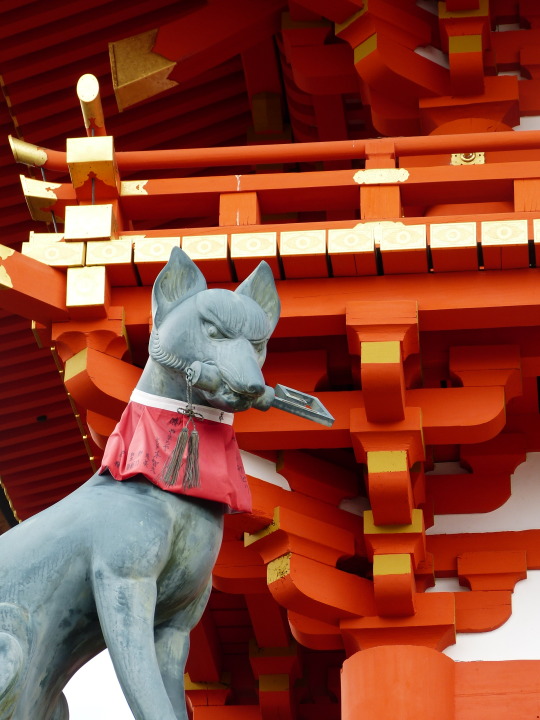
287 notes
·
View notes
Text
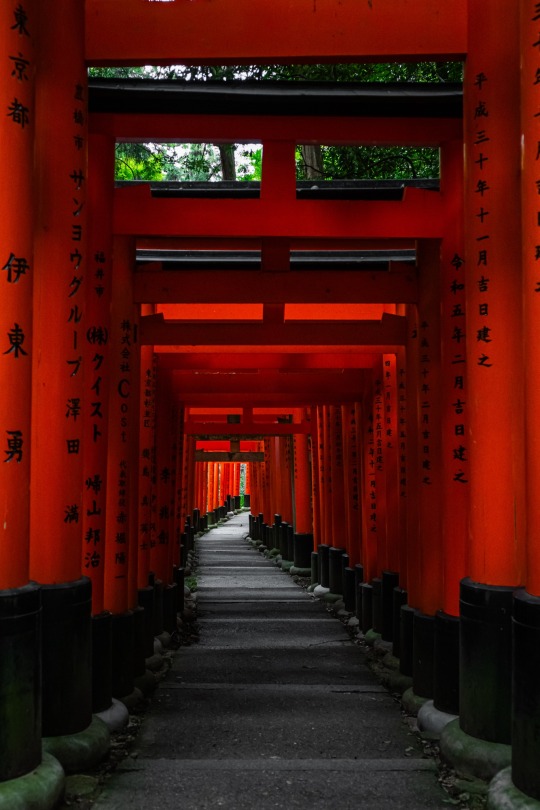
KYOTO, JAPAN
#Kyoto#京都#Japan#日本#kyoto prefecture#kyoto vacation#kyoto travel#kyoto trip#japan vacation#japan travel#japan photos#japan trip#japanese#shinto#shrine#fushimi inari shrine#fushimi inari taisha#architecture#red#torii#torii gate#travel photography#travel#trip#vacation
26 notes
·
View notes
Text










⛩️⛩️⛩️⛩️⛩️ Hello, Kyoto. ⛩️⛩️⛩️⛩️⛩️
(ft Mt. Fuji 🗻)
#Kyoto#Japan#japan travel#Gay travel#torii gate#Inari#fushimi inari taisha#Origami#Crane#Bamboo#hello kitty#Mt Fuji#Me#My face#Personal
14 notes
·
View notes
Text

Taking Astarion to the top of Fushimi Inari Taisha~
22 notes
·
View notes
Text

伏見稲荷大社 ・京都 by Laura Otsuka
Fushimi Inari Taisha, Kyoto
#japan#日本#関西#kansai#shrine#photography#kyoto#京都#Fushimi Inari#fushimi inari shrine#Fushimi Inari Taisha#Kimono#伏見稲荷大社#伏見稲荷#着物#鳥居#Torii
13 notes
·
View notes
Text

Fox McCloud is easy the coolest divine messenger!
⛩️🦊⛩️
#history#star fox#shigeru miyamoto#fushimi inari taisha#fox mccloud#video game history#nintendo#fox#shinto#animals#japanese history#gamer girl#video game icons#inari#torii gate#video games#animal history#japan#landmarks#super smash bros#holy site#video game development#japanese culture#kyoto#nickys facts
28 notes
·
View notes
Text

Fushimi Inari Taisha
Kyoto, Japan
12 notes
·
View notes
Photo

Known as one of the historical hubs of Japan, Kyoto has a notable number of well-preserved neighborhoods, majestic temples and all manner of photo-worthy landscapes.
(via 15 of the best free things to do in Kyoto - Lonely Planet)
#kyoto#kyoto japan#lonely planet#visit japan#travel#fushimi inari taisha#Nishiki Market#geiko#gion district#hanami#Kamo River#Yasaka Shrine#Arashiyama
6 notes
·
View notes
Text


Shikaotoko Aoniyoshi (Ep 2)
#Shikaotoko Aoniyoshi#deer man#tamaki hiroshi#hiroshi tamaki#haruka ayase#ayase haruka#japanese drama#j drama#jdrama#dorama#japan#asian drama#kyoto#fushimi inari#fushimi inari taisha
15 notes
·
View notes



